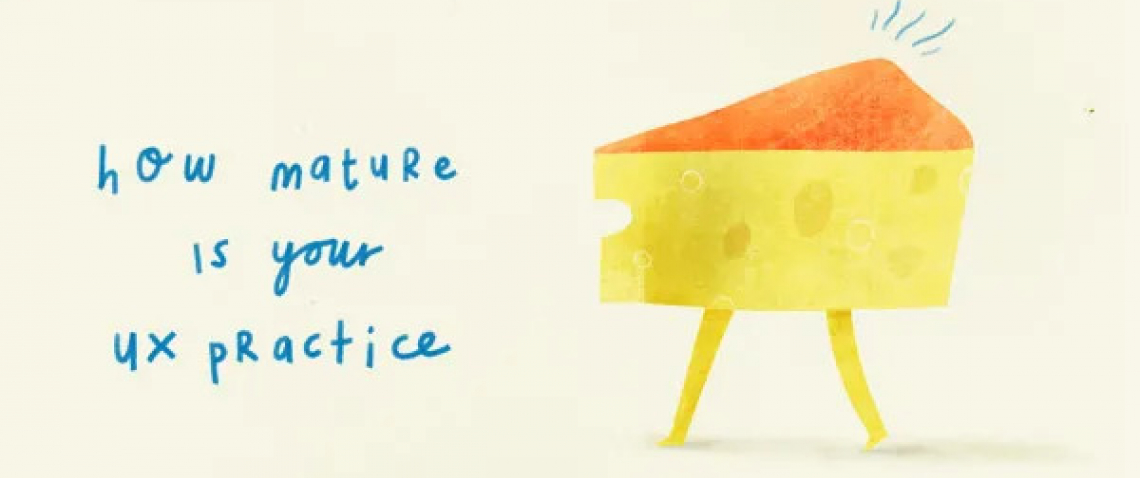
How Mature Is Your UX Practise? An Interview With Margaret Hanley
- By
- Nao Madison
- March 8, 2023
Recently I attended the Melbourne UX Leadership Meetup, that was presented by Margaret Hanley, she was sharing her ideas and insights around UX maturity models. In these models Jennifer Fraser and Scott Plewes identify milestones in which you can gauge how mature your practice is. Like any function or practice, not all businesses have embraced UX design to the same degree or level of maturity.
Knowing how important the growth of a UX capability is for the wider business I wanted to ask her some more questions over a cup of strongly brewed English Breakfast.
(For all of you on the run and not lucky enough to have time to sit down for tea I have released a Podcast of our chat, listen here)
Margaret Hanley has experience delivering and growing UX capabilities for clients like the BBC, Razorfish and WTG, she has taught user experience management at global conferences, has spoken at various summits including IA in Atlanta, on retail IA for Debenhams and UX Australia and has been the Director of Information Architecture for Argus Associates working alongside the likes of Louis Rosenfeld and Peter Morville.
So Mags why is it important that UX plays a part in leading business direction and decisions?
“UX keeps the bastards honest: it focuses on the customer and their needs; rather than on profit and the whiz-bang of technology. UX has the customer or user in mind every time an organisation has an interaction with them. It’s different from using designers who care about just the brand and visuals, and product who cares about the product selling? And an organisation that cares about the user will make more money; if it is combined with the right product.”
How do we know when UX is guiding a business?
“Measurement…A lot of what we do as UXers, is based around qualitative research, so we must learn to quantify our impact. Be it being a customer satisfaction score like NPS, reduced numbers of emails to customer service, increased use of the site or selling more product.”
We know that to get UX practice as part of the business we need to have our executive and leadership teams selling and believing in the value of UX, how can we build their trust and get UX into the boardroom?
“Trust can only be built by understanding how people work. Use UX techniques to understand how the Exec Team work — interviews with key stakeholders, talking to the people they work with, how the company is measured, what is deemed success or failure.
You can go in guns blazing, but you need to prove value. The days of ‘it’s just good to do this’ are gone.”
You mentioned Leah Buley during your talk; why is some of her research so beneficial?
“Leah has game. — she has worked with organisations at the cutting edge of UX at Adaptive Path; written a book about being a lone UXer in an organisation and has worked as an analyst at Forrester.
So her research at Forrester and now independently is important because it allows us to understand the conditions where a UX/CX practice will flourish and make an impact.
This is important — because UX can be commoditised. It can be that a set of methods arejust applied — ticking boxes (we’ve done usability), rather than actually impacting the users and the organisation.
It makes a case for where a UX function should live and how many people should be in the team.”
There are 5 stages in the Jennifer Fraser and Scott Plews 2015 indicators of user experience maturity model. Do you think it is possible for Melbourne to start working at a Stage 5 level and what do we have to do to achieve this?
“As I said in my talk, I’m not sure there are any Stage 5 organisations in Australia or maybe the world. I could be wrong. I do know that the team at Seek led by Cam Rogers and Kirsten Mann at Aconex are pretty close.
Most Melbourne UX teams are lucky to be Stage 3 — applying the processes and getting some wins.
To start working at Stage 4 (the one I consider most attainable), you need strong, experienced leadership. This is where we fall down. There aren’t many people who have the experience of doing this for more than 10 years; and then working across agencies, in-house and consultancy.
We need to consciously develop this talent, which is where the UX Leadership Group is invaluable; a place to learn, meet others at the same level, share stories and gather experience. We all need a safe place to say, ‘I don’t know.’”
Mags you gave me a UX Maturity Scorecard at the end of your presentation, I immediately wanted to take it to some of my clients. How can businesses start making changes to help them to build more mature practices?
“Benchmark themselves first; you can only move forward if you know where you are now. Then work out where in the model you realistically want to be in 12 months. This gives you an idea of how you need to develop the practice and impact the business. You may just want to shore up the UX practice because people have left — so you are a strong 3.
It could be hiring a UX leader to take the practice from 2 to 3; or building up the core team with team leaders to allow the most senior UX Leader to focus on culture and working in the organisation to take it to Stage 4.
You may not be able to do this on your own — consider finding a trusted, confidential coach or mentor who can be your sounding board.”
For all those solo UXers out there struggling to see how they will ever get their business to adopt design thinking, what three pieces of advice would you give them?
“Short term impact — how can you prove worth with a small project? Understand how the business makes decisions (analytics, product sales, reducing costs, revenue) and learn from the people who are doing this well in the organisation. Be ready to compromise — sometimes we get so evangelical that we annoy people; be able to see others’ perspective; and work in a team”
If you are in need of a mentor, need some advice about how to build your practice or create some actionable milestones for 2017 please reach out to Margaret Hanley
A big thank you to Margaret Hanley, Morgan Consulting and Sabine Brix

.jpg?r=a2-s1030.465-o)

